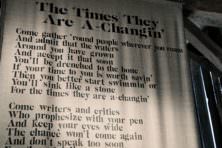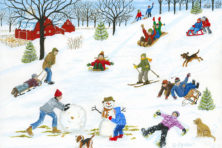Questions & Artists: Installation Artist Elysia Holland Michaelsen
- Share
- Tweet
- Pin
- Share
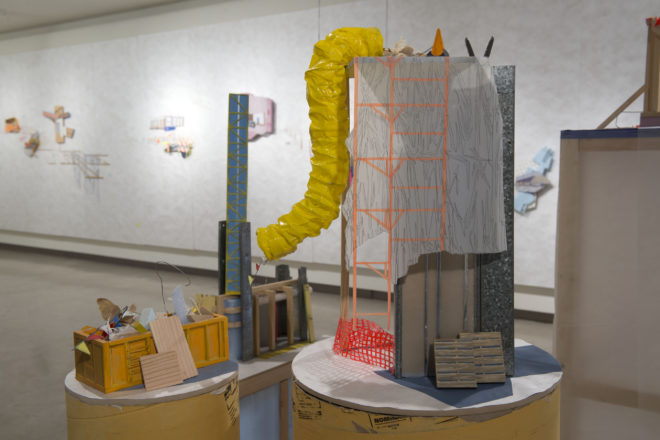
Dumpster diving is a means to an end for installation artist Elysia Holland Michaelsen, who transforms found and worn objects into colorful, sculptural narratives of her experiences living in different towns and cities. Michaelsen is the director of education at the Peninsula School of Art. For more on her work, visit elysiaholland.com.
Alyssa Skiba (AS): What is your first memory of making art?
Elysia Holland Michaelsen (EHM): My parents always had painting, drawing and sculpting materials in the house, so I have snippets of memories of making art at a very young age. However, my earliest full memory is from the first class I took at Minnetonka Center for the Arts, a non-profit near where I grew up in Minnesota, when I was about five years old. I made an assemblage-based sculpture out of wood scraps, hammered pennies, and other odds and ends. The final result was quite a few bruised/hammered fingers and a sculpture that could be described as…interesting. Nevertheless, I was ready to see what day two of class would bring, which I guess was less memorable.
AS: When did you know you wanted to be an artist? Was there someone who influenced your journey to art?
EHM: Art and making have been a part of my life for as long as I can remember. While my family members are far too humble to identify themselves as artists, the truth is they are musicians, ceramicists, furniture makers, photographers, and set designers. So, there has always been a great amount of respect for the creative process within my family. My parents recognized early on that I was interested in art and prioritized trips to museums and galleries to expose me to a variety of different approaches to artmaking, from traditional to experimental. Those experiences showed me that a career was possible within the arts and I have never looked back. This path has felt incredibly natural and I’m fortunate to have had such a supportive family with me along the way.
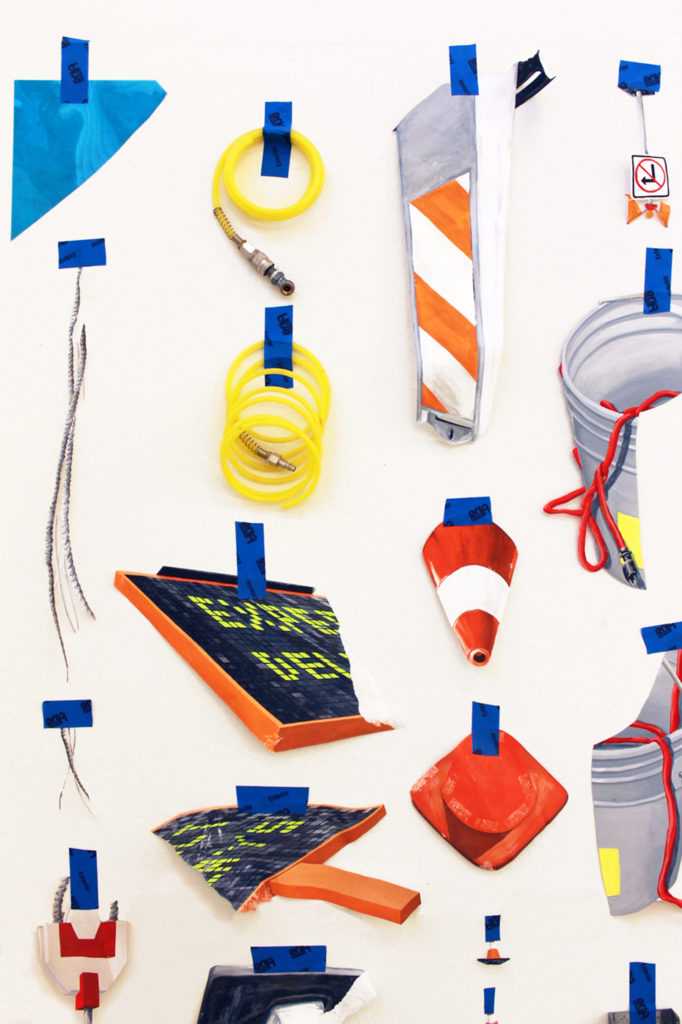
“Archive” Installation Detail.
AS: What drew you to mixed media/installation art?
EHM: My first love will always be painting. However, I think it’s important to listen to what the work needs. When I moved to Phoenix for graduate school at Arizona State University (ASU), the content of my work shifted as I responded to my new place. Phoenix is a sprawling city that is in a constant cycle of construction and destruction; a Kmart is torn down to the ground, only to be replaced by a Petco months later. ASU was no stranger to expansion, either. During that time, my tiny studio building became an island in a large-scale construction site of in-progress recreational and academic buildings. Everyday featured a new interruption – the water was shut off, power was lost, and the detour to the building was ever changing. My first explorations of that cycle included paintings and drawings. I had a mass amount of photo documentation, but also brought in actual rubble, construction cones, and signs to supplement and create still-lifes out of. As my studio filled up, the paintings and objects started to interact with one another. At first the interaction was brutal and obvious, but over time it evolved and began to better express the content of the work than the paintings alone ever could. The work was less about the specific images of each site, and more about the experience of navigating such disruption. An installation that altered how a person viewed and moved through the space was what the work needed.
AS: In your view, what is the purpose of installation art?
EHM: Over the last several years, I have seen artists and institutions move away from the defined studio areas of painting, sculpture, video, etc. and move toward work and programs that emphasize a cross-disciplinary practice. With installation art being so openly defined, it can encompass one or many media, it is often temporary, and nearly always site-specific. All of those characteristics make it exciting for the maker and viewer; if you were in this one place at this one time, you saw an installation that can most likely never be replicated again. Installations are very unique in that way; they exist once and then only in photos.
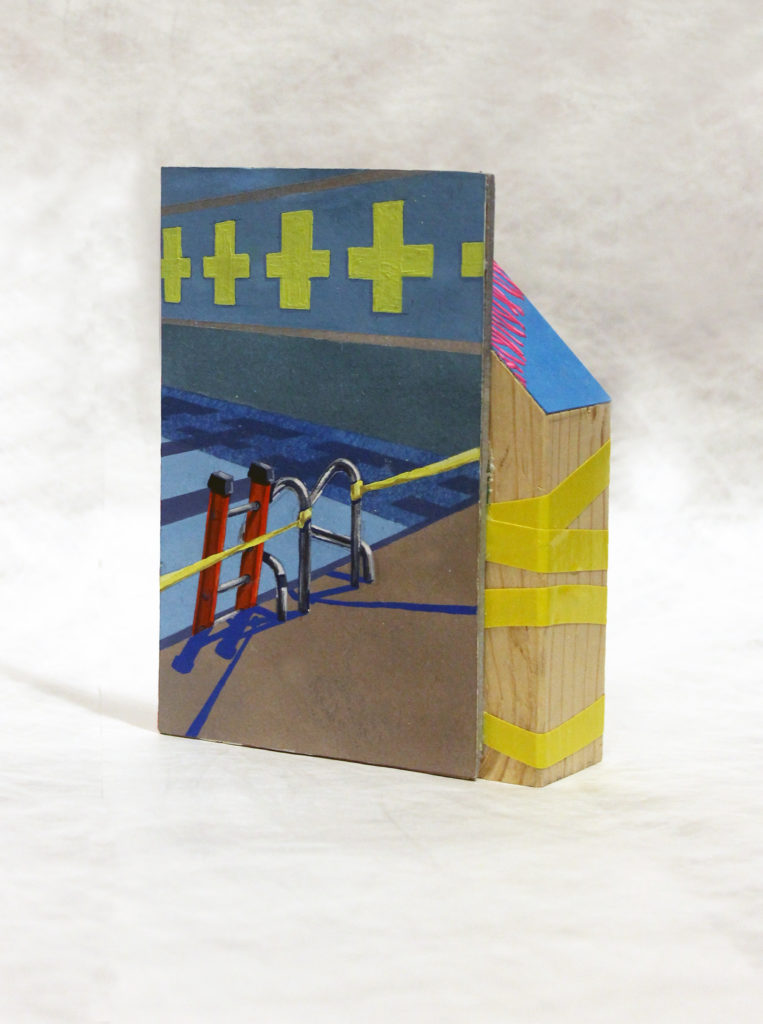
“Closed for Repairs.”
AS: Much of your work is created using found objects. Tell me about the process of finding these items and using them in your work.
EHM: A lot of dumpster diving is involved. I like objects that have a history. It’s not a history I need to know the specifics of, but I look for items with visible wear and tear. The objects themselves vary, from a violet-colored phone cord to a broken wrench to a wood scrap that has been kicked around a site for days. I rarely have a plan in mind or specific item I’m looking for, I just grab what catches my eye. Plus, I don’t want to be rooting around a dumpster for too long, so quick decisions are necessary. I bring everything back to the studio and start moving things around. I work quickly and combine and recombine in-progress works with the found objects; it’s a very intuitive process.
AS: How would you describe your style/artistic approach?
EHM: I was trained in traditional methods of painting and drawing in undergrad and I think that sensibility comes across in my sculptural and installation work. The way I handle materials, color and composition is very much rooted in painting, which is both my strength and downfall. I have created more than one sculpture that I sort of forgot about the “backside” of. So, while certain aspects of the making process come very quickly and naturally, I sometimes have to remind myself to turn the object around.
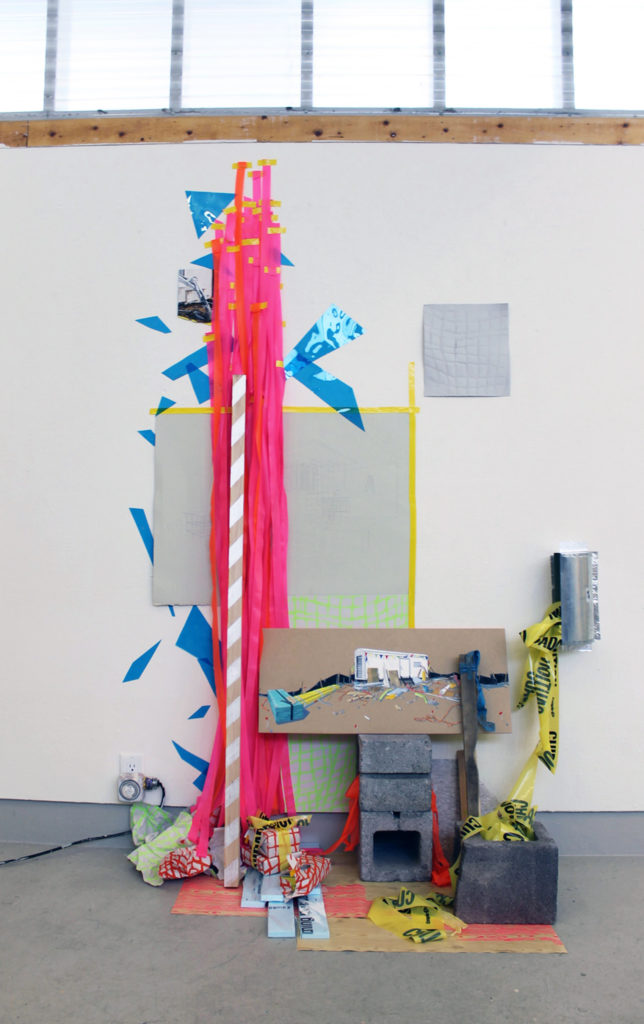
“The Day When Something Began.”
AS: What do you hope to achieve with your artwork?
EHM: The starting point for every piece I make is based on my own experiences in a place. That information is recombined to make hybrid spaces that pull from moments I experienced throughout any one town or city. In some cases, those specifics are important to the viewer, and in other cases the overarching narrative is more important. Conversations regarding both approaches to the work are incredibly interesting! Some viewers share other locations I should scout out for imagery, while others tell me about an experience they had that mirrors the narrative I’m exploring.
AS: Who is your biggest artistic inspiration?
EHM: To only name one is impossible, but I can name three! Julie Mehretu, Judy Pfaff and Sarah Sze never cease to amaze me. Each of these women has a background in painting, yet they flawlessly move between sculpture, collage, installation and painting. I admire them for their ambition in taking on such large-scale projects, their commitment to listening to what the work needs, and the mentorship they have provided to young female artists.
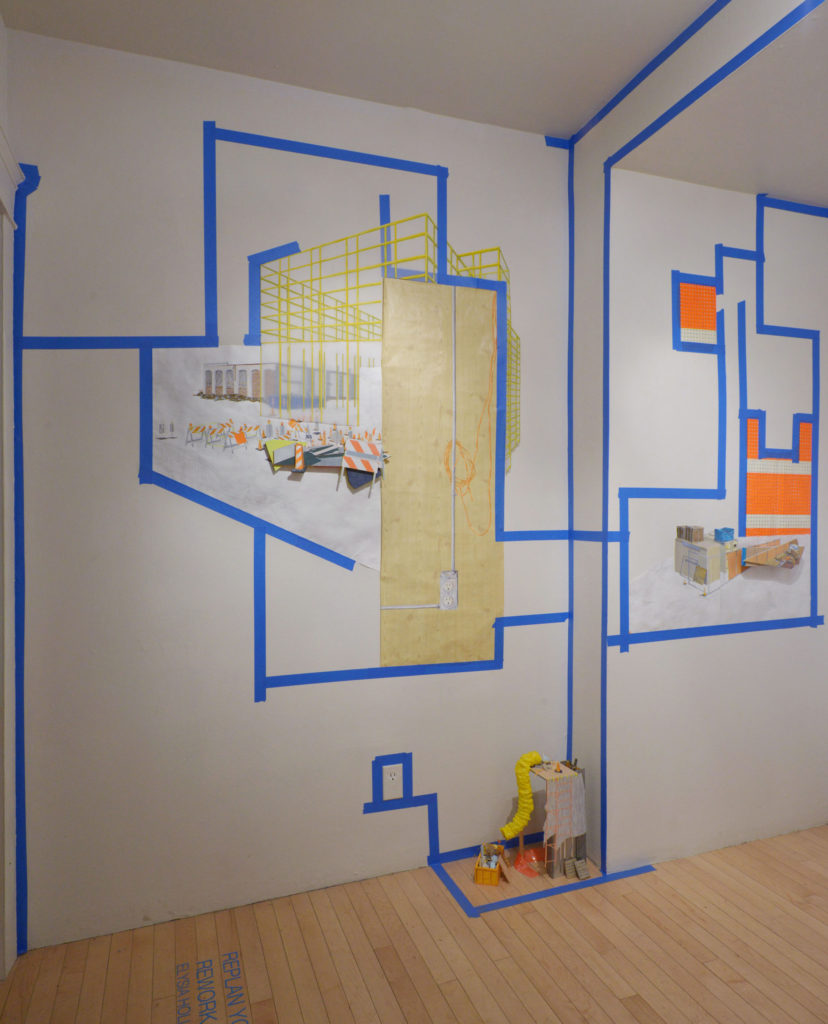
“Replan Your Work, Rework Your Plan” Installation Detail.
AS: You are the Director of Education for the Peninsula School of Art. What does this job entail? Has it influenced your personal artwork?
EHM: My position provides me with the opportunity to engage all ages of students in varied arts experiences with visiting artists from around the country. Our students include those who are brand new to art-making to those who have been perfecting their craft for years. This summer, we are offering 118 adult workshops and lectures and 37 youth workshops in the areas of painting, drawing, printmaking, metals, ceramics, sculpture, and photography. This provides the potential of 30,000 contact hours of instruction!
My work at PenArt and my studio practice fuel one another. I am fortunate to be able to spend so much of my time discussing art and making. PenArt has an incredible faculty with innovative approaches to a variety of media. Throughout the summer, one can find me in the back of each workshop observing our instructors at work. I would be lying if I said I didn’t jot down a few personal notes from time to time. In turn, I encounter new artists, education trends, and studio methods in my personal research that inform my plans for future curriculum at PenArt. I feel very fortunate to have found a place that shares my commitment to the arts.

